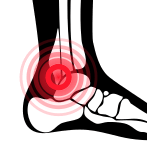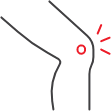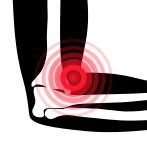If you’re in the sports or fitness world, it’s likely that you’ve come across one or more ACL tears in your life. ACL tears are common in people who play athletes, especially those who play sports that require lots of pivoting and cutting- volleyball, soccer, lacrosse, basketball are sports where ACL tears are common, especially in our female youth. Serious ACL injuries may require surgery. If you’re looking for a physical therapist to help you excel after ACL tear surgery, Next Level Physio is the team to call.
What is an ACL Tear?
If you’re someone who has never experienced an ACL tear, consider yourself lucky. The anterior cruciate ligament (ACL) is one of several strong ligaments that connects the femur (thigh bone) to the tibia (shinbone) and stabilizes the knee during athletics. An ACL tear is when one of these strong bands tears, either partially or completely. OUCH. Did you know that most ACL injuries are non-contact related?
How Do You Get an ACL Tear?
ACL tears most commonly occur during sports that involve sudden stops or changes in direction. Jumping, landing awkwardly from a jump, or making intense and misaligned impact can all result in a torn ACL. That’s why athletes who play sports like soccer, basketball, football, downhill skiing, and gymnastics are at high risk for ACL tears.
What are the Signs and Symptoms of an ACL Injury?
If you’ve never had a torn ACL, you may be wondering, “What does an ACL tear feel like?” The unfortunate reality is that ACL tears tend to be quite painful. Most people say they hear and/or feel a loud “popping” sensation in the knee, followed by rapid swelling and severe pain. Other symptoms of a torn ACL include inability to move the knee, feelings of instability, and too much pain to be weightbearing on the leg.
How are ACL Tears Diagnosed?
The Lachman test is the most accurate method doctors use to diagnose an ACL tear. This diagnostic test reveals increased motion of the tibia relative to the femur with the knee in a slightly flexed position. In addition to the Lachman test, ACL injuries typically also require X-Rays and MRIs.
What is Involved in ACL Tear Surgery?
Reconstructing or repairing the ACL involves using a graft to replace the ligament. The graft is usually taken from the tendon of kneecap (patellar tendon) or one of the hamstring tendons. Although it is common, ACL tear surgery is major surgery and must be taken seriously if patients want to heal properly.
How to Heal After ACL Surgery?
Conservatively speaking, the typical recovery time for an ACL tear surgery is 9 months. People who play sports may need to wait 9-12 months to return to their activity. This depends on the sport, the patient’s physical condition, and how their recovery process goes.
Doctors usually prescribe physical therapy for a torn ACL within 48-72 hours after the surgery. After the initial consultation, your physio team will build a specific recovery plan of care designed specifically for you.
Next Level Physio Physical Therapy for ACL Tear Surgery
Injuries happen, but it’s how we’re coached and cared for on the road to recovery that makes all the difference. Next Level Physio works with clients who have had ACL tear surgeries all the time. That means we know just what you need to get back on the path towards pain-free living.
The key is getting the right care for you. For those who are content with walking and low intensity activities, there’s a program for you.
For those looking to excel, you need a much different program.
What do we do differently at Next Level? On top of using cutting edge modalities and treatment strategies, we also provide you with programming to keep the rest of your body from deteriorating, and for those who are active, we can coach you on what CAN do to keep fit and healthy during the long recovery process.
Using our MEI Method, we work closely with you to design the right plan of care for you. The frustrations we often hear from clients who have been to the mill or corporate physical therapy practices include:
- The PT there didn’t really spend a lot of time with me.
- The PT was seeing 5 other patients at the same time.
- All they did was put on a hot pack, rub some gel on my hip, then have me do pointless exercises on my own.
- They didn’t care about my goals after surgery and did nothing to get me back to my favorite activities.
Does this sound like the type of PT place that will get you the results you want?
That’s why we’re different :)
Our goal is simple: help you heal without medication or surgery. In addition to physical therapy for torn ACL surgeries, we also work with patients for conditions including:
- Sports injuries
- Pre-surgical rehab
- Post-surgical rehab
- Neck pain
- Shoulder and elbow pain
- Vertigo and concussion
- Wrist and hand pain
- Ankle and foot pain
- Sciatica/back pain… and more
Some of the physical therapy methods we use for pain treatment include:
- IASTM Technique
- Blood Flow Restriction Training
- Therapeutic Exercise
- Shockwave
- Cold Laser
- Australian Manual Therapy
- Cupping, and more
Click here to schedule an appointment and a free consultation.















